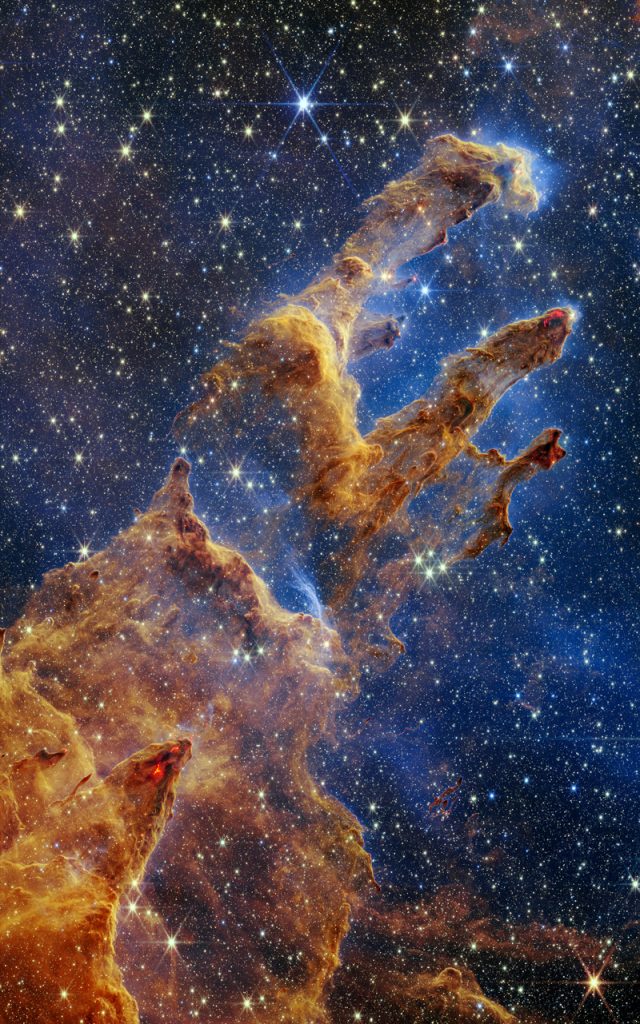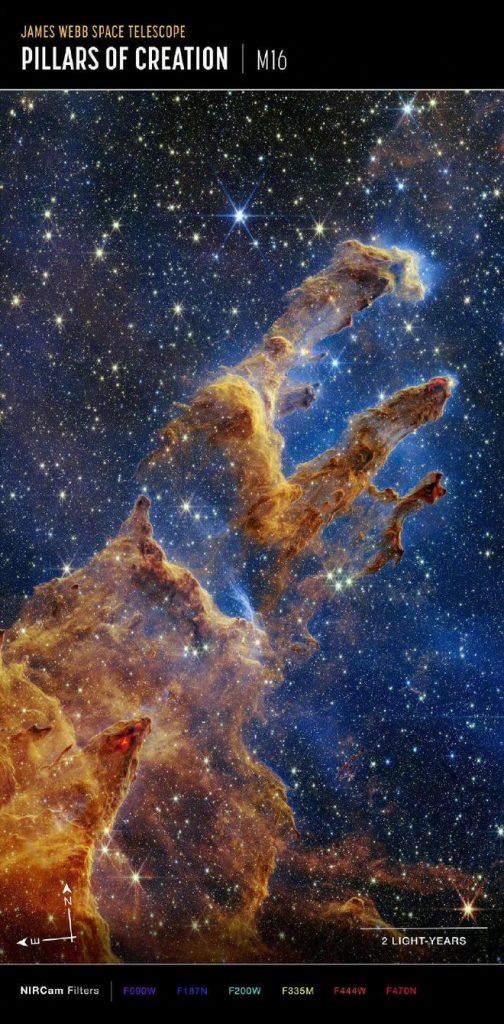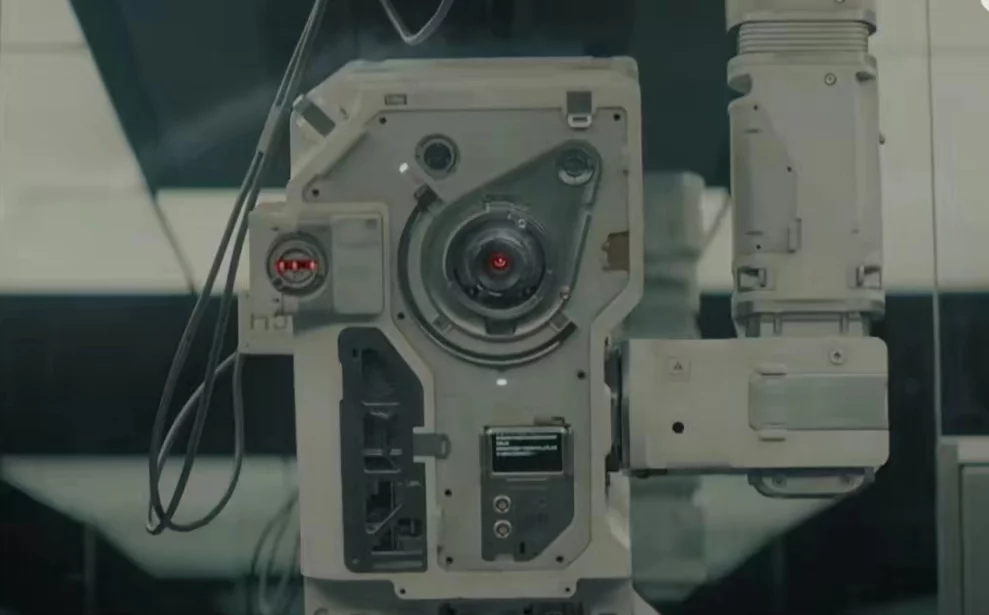今年10月份,美国国家航空航天局(NASA)公布了詹姆斯·韦伯太空望远镜捕捉到了圆柱形星际气体和尘埃构成的天体景象“创生之柱”的详细图像。
当时那张图片相比于1995年哈勃望远镜拍摄到的明显更加清晰,细节更丰富。

哈勃与韦伯第一张图像对比
今天,NASA又公布出了一张韦伯太空望远镜最新拍摄到的“创生之柱”,是由近红外和中红外相机拍摄的两幅图像合成,相比上次的细节更多了一些,非常壮观(原图地址)。
据了解,“创生之柱”位于距地球约6500光年的鹰状星云内,曾在1995年被哈勃望远镜捕获,曾被Space网评定为哈勃太空望远镜拍摄的最佳前十名的照片之一 。

因其巨大的规模而得名,是老鹰星云的一个”臂膀”,这个特殊的臂膀 从星云中伸出来,形成长长的气体和尘埃卷轴,几乎看起来就像伸向未知世界的宇宙”手指”。
沿着”创生之柱”的边缘有大量的小红星,这些都是恒星的雏形,可以看做是婴儿期的恒星。
支柱上面是巨大的热尘埃云,即图片中的红色,天文学家认为这是被超新星爆炸的冲击波烤焦了。

Pillars of Creation
Image Credit: Science – NASA, ESA, CSA, STScI, NIRCam
Processing – Joseph DePasquale (STScI), Anton M. Koekemoer (STScI), Alyssa Pagan (STScI)
Explanation: A now famous picture from the Hubble Space Telescope featured these star forming columns of cold gas and dust light-years long inside M16, the Eagle Nebula, dubbed the Pillars of Creation. This James Webb Space Telescope NIRCam image expands Hubble’s exploration of that region in greater detail and depth inside the iconic stellar nursery. Particularly stunning in Webb’s near infrared view is the telltale reddish emission from knots of material undergoing gravitational collapse to form stars within the natal clouds. The Eagle Nebula is some 6,500 light-years distant. The larger bright emission nebula is itself an easy target for binoculars or small telescopes. M16 lies along the plane of our Milky Way galaxy in a nebula rich part of the sky, toward the split constellation Serpens Cauda (the tail of the snake).





